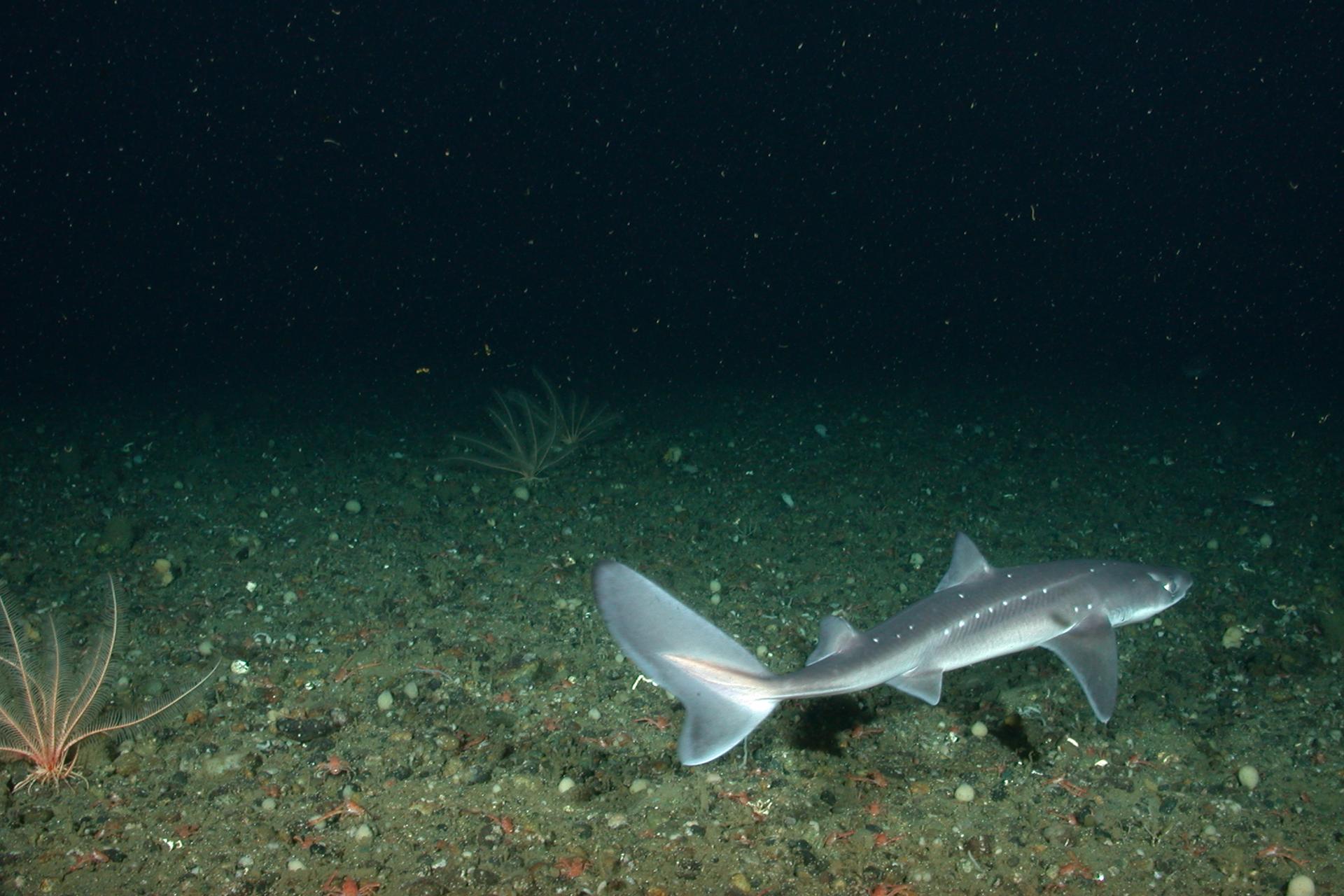Probably the most common shark of the world, but its numbers are declining. The Spiny Dogfish can be found worldwide in temperate and subarctic waters, at all levels.
Latin name Squalus acanthias
Maximum size in cm 160
Colour Slate, few white spots, paler below
Found where All levels
Other names Spurdog, Mud Shark, Piked Dogfish, Skittledog, White-spotted dogfish, Codshark, Thorndog
Status (IUCN) Vulnerable
Diet Fish, squid and crustaceans
The Spiny Dogfish is one of the most popular sharks for human consumption. In the early 20th century, off the coast of the US state of Massachusetts alone there were about 27 million of these small sharks caught for consumption every year.
Rock salmon
But many cultures appreciate this shark as food, such as the Italians. The British call it ‘Rock Salmon’ or sell this and other dogfish in fish and chip shops as ‘huss’. In Australia it is eaten as ‘flake’. The shark is also fished for liver oil, pet food, fishmeal and fertiliser.
The Spiny Dogfish has dorsal spines, no anal fin, and white spots along its back. It may live over 30 years. Although popular for consumption, fishermen have a dislike for the small sharks for their teeth, their mildly poisonous spines on dorsal fins and because of the damage they cause to nets and catch.
Large distance swimmer
This shark has no problem entering brackish water. Sometimes this species form huge schools and can swim great distances despite its small size. One tagged off the West Coast of the USA was caught seven years later in Japan, 6500 km away. Spiny Dogfish in the northern Pacific Ocean have recently been re-evaluated as a separate species, now known as Pacific Spiny Dogfish.
Overfishing has put a pressure on the Spiny Dogfish, especially in Europe. Since the species is a late maturing fish, it takes a while to rebuild the population. In 2010, Greenpeace International added the spiny dogfish to its seafood red list.

